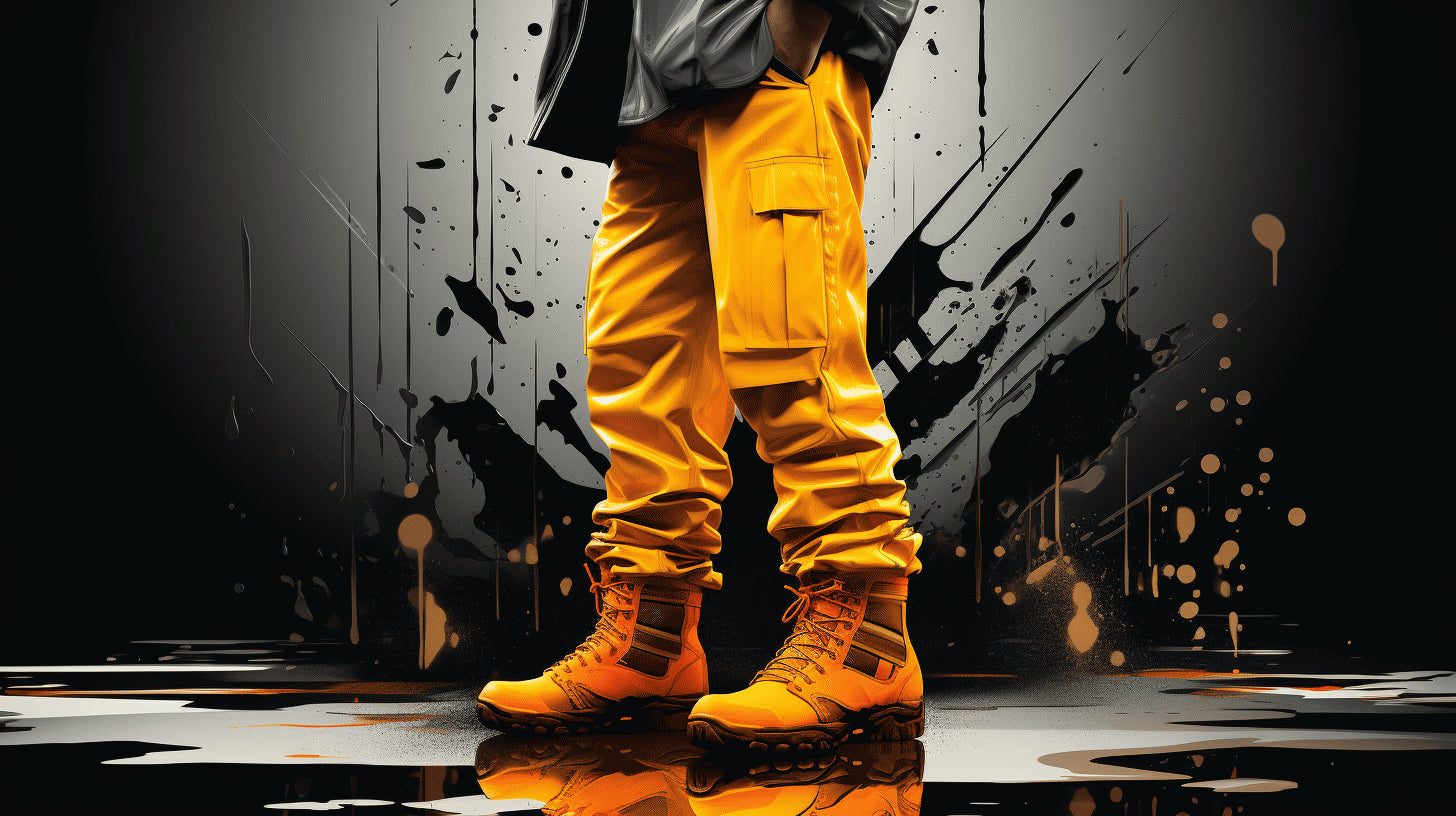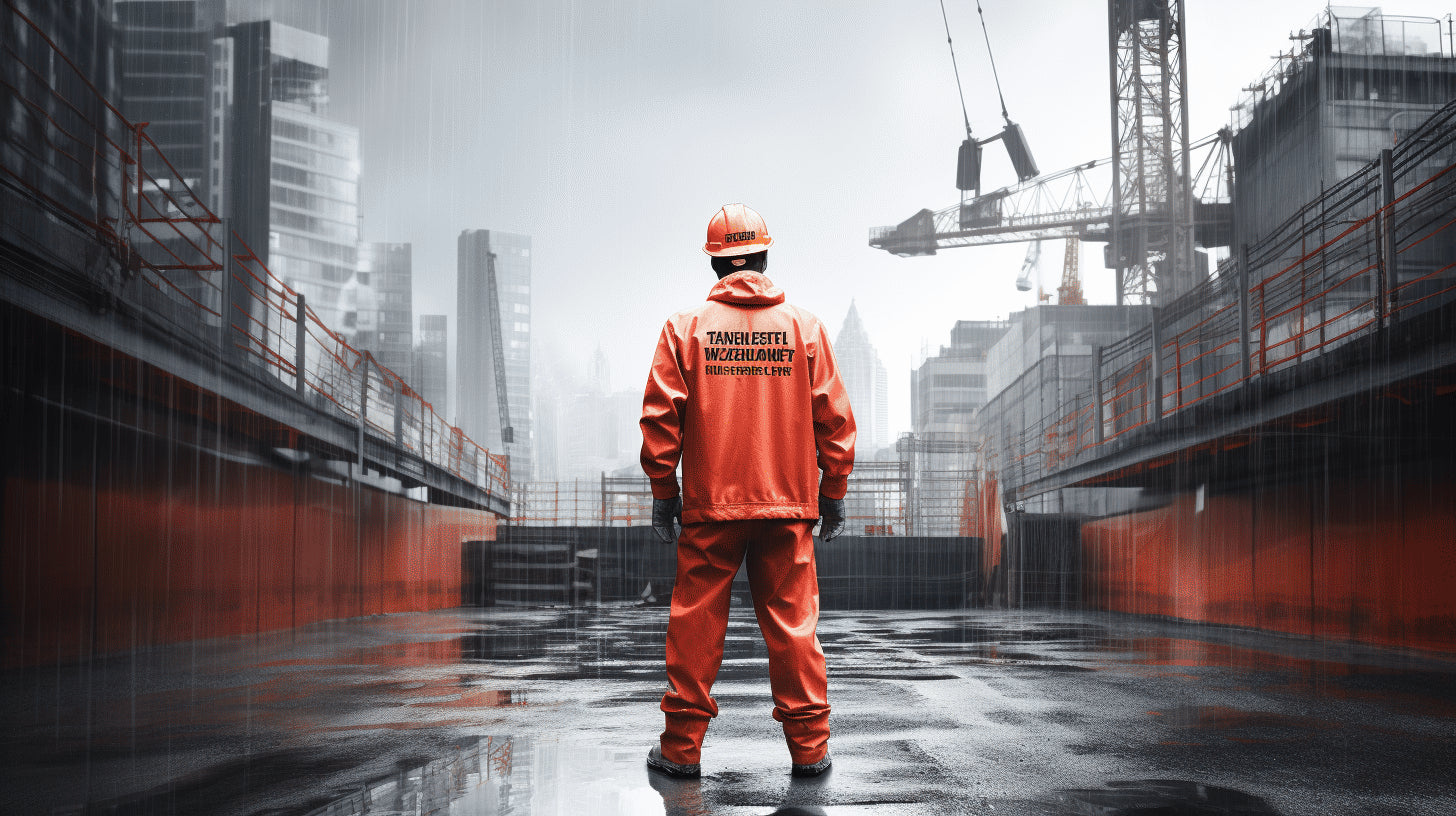Welcome to the handy guide for choosing the right rain gear suited best for the needs of construction workers. This guide will prove to be an essential resource for those who spend their days laboring at construction sites, often exposed to harsh weather elements, including torrential rain. Whether you are a seasoned professional or are new to the industry, having the appropriate rain gear is indispensable in ensuring your safety, productivity, and overall well-being. In the following sections, we are set to explore the importance of rain gear, delve into the various types available on the market, discuss the materials used in their manufacture, and examine some key considerations that should guide your purchase decision. We'll also touch on how to properly maintain and care for your rain gear to extend its lifespan. So sit tight, and let's embark on this journey to equip you better for those rainy days on the construction site!
Importance of Rain Gear for Construction Workers
The weather is a fundamental factor that shapes our daily life, and it's no different for construction workers. A large part of their job occurs outdoors, making them a group that is particularly affected by different weather conditions. Among these, rain can pose a considerable challenge, which highlights the importance of proper rain gear for people in the construction industry. Let's dive into the various reasons that make rain gear an essential companion for construction workers.
Safety
A paramount concern on a construction site is safety. The aim is to prevent work-related accidents, and part of that prevention lies in ensuring that workers are suitably equipped against the elements. Rain, specifically, can create slippery surfaces and compromise visibility. High-quality rain gear is crucial for safety and can help in reducing these risks.
- Waterproof Boots: They provide grip on wet surfaces reducing slip-and-fall incidents.
- Rain Jackets and Trousers: They ensure better mobility and visibility during downpours.
Productivity
Weather-related challenges should not hamper the work progress. The right rain gear can ensure seamless workflow even under adverse weather conditions. It is evident that a practical, durable rain gear can boost productivity by enabling tasks completion even when the skies open up.
- Durable Materials: Rain gear made of sturdy and waterproof materials gives the workers the freedom to move without the constant worry of getting soaked.
Comfort
Comfort is a considerable aspect when it comes to work wear, and rain gear is no exception. It's not just about staying dry but also feeling physically comfortable enough to carry out one's duties effectively. Investing in high-quality rainwear that's also comfortable and durable can tremendously improve a worker's performance.
- Breathable Fabrics: The use of breathable materials in rain gear prevents overheating and allows better ventilation, contributing to overall comfort.
Health Considerations
Last, but by no means least, are the health considerations. Exposure to cold, wet weather can be detrimental to worker's health in the long term. Waterproof materials assist in maintaining body temperature in wet, cold conditions, significantly supporting workers' health.
- Layering Options: Rain gear that allows for layering can help maintain body heat, helping to prevent health issues related to prolonged exposure to cold conditions.
In essence, the right rain gear can be a construction worker's best friend. It significantly contributes to safety, productivity, comfort, and long-term health. So next time the forecast predicts rain, remember to gear up appropriately and tackle the day head-on! Rain or shine, the construction must go on.
Types of Rain Gear
There's a unique sense of calm that comes from walking in the rain. However, wet clothes and sodden boots can quickly turn this serene experience into an uncomfortable one. That's where quality rain gear steps in. With the right rain gear, neither dramatic downpours nor irritating drizzles can dampen your enthusiasm or your outfit. From rain jackets and pants to full rain suits and waterproof accessories, we're going to dive deep into the types of rain gear that will keep you dry and cozy.Rain Jackets
A trusty rain jacket is a cornerstone of any effective rain gear set. These jackets are specially designed with water-resistant materials to keep the rain out and maintain your comfort levels. There are various types of rain jackets, including:
- Hardshell Jackets: These are the most waterproof but less breathable.
- Softshell Jackets: While not as waterproof as hardshells, these offer increased breathability for active wear.
- Hybrids: These jackets combine the best of both worlds, balancing breathability and waterproofing.
Rain Pants
Rain jackets guard the top half of your body, but what about your legs? That's where rain pants come into play. Made from the same water-resistant material as jackets, these pants ensure that you remain dry from head to toe. Some even have full-length zippers for easy removal and extra ventilation.
Full Rain Suits
If you prefer a one-piece solution for managing the rain, then a full rain suit might just be your match. They provide comprehensive coverage and are commonly used by outdoor workers and bikers. Some unique features of full rain suits include a hood, waist tightening cords, and cuffed sleeves and legs to prevent water from seeping in.
Waterproof Boots
Your feet need protection, too, especially if you're venturing through puddles or muddy terrain. Waterproof boots, often made from rubber or leather treated with waterproofing agents, keep your feet dry and warm. Some models also provide added support, ideal for hikes or long walks.
Waterproof Gloves
When it's cold and wet, your hands can quickly become freezing. Waterproof gloves provide warmth and dryness. Crafted from water-resistant materials, these gloves can handle rain and snow alike.
Waterproof Hats
Last but not least, a waterproof hat can deliver an additional layer of protection. Whether it's a wide-brimmed hat for heavy rain or a traditional cap for light showers, these hats keep the rain off your head and shield your eyes for improved visibility.
As you can see, there's practically an entire wardrobe of rain gear available, designed to keep you dry no matter what mother nature has in store. So don't let a bit of rain keep you indoors - with the right gear, you can embrace the elements with confidence and style.
Materials Used in Rain Gear
When it comes to gearing up for those rainy days, having the right material in your rain gear can make all the difference. From keeping you dry to ensuring comfort and durability, the fabric's choice plays a crucial role. Whether you're going for a rainy-day hike or battling daily downpours on a commute, understanding the materials used in rain gear could be your key to staying comfortable and dry. This article discusses the common materials used in rain gear: PVC, nylon, polyester, and Gore-Tex.
PVC
Plasticized polyvinyl chloride, commonly known as PVC, is a popular material used in rain gear due to its toughness and excellent water resistance. This type of material is commonly used in heavier raincoats or protective gear where durability and full waterproofing are essential. However, PVC doesn't breathe well, meaning it can become quite sweaty underneath in warmer conditions.
- Benefits of PVC Rain Gear
- Highly waterproof
- Durable and robust against scratches and tears
- Relatively affordable
- Drawbacks
- Lack of breathability can lead to discomfort in warm weather
- Can be heavy and less flexible compared to other materials
Nylon
Nylon, initially designed as a synthetic replacement for silk, is a lightweight, resilient synthetic polymer. In rain gear, nylon is often treated with a water-resistant coating to enhance its ability to repel water. This material is used largely in lightweight packable rain jackets.
- Benefits of Nylon Rain Gear
- Lightweight and packable
- Strong and durable
- Fairly breathable, especially when compared to PVC
- Drawbacks
- It may not be as waterproof as other materials
- The water-resistant coating may wear off over time, reducing its effectiveness
Polyester
Polyester, another widely used synthetic material, is more breathable than PVC but less breathable than nylon. It's often used in a blend with other materials to balance durability, water resistance, and breathability.
- Benefits of Polyester Rain Gear
- Good balance between breathability and water resistance
- Durable and robust
- Often blended with other materials for optimal performance
- Drawbacks
- Less breathable than nylon
- Not as lightweight as nylon
Gore-Tex
Then, of course, there's Gore-Tex, the crème de la crème of rain gear materials. Gore-Tex is a waterproof, breathable fabric membrane invented in 1969. This material is popular in high-end rain gear due to its excellent balance of waterproofing and breathability.
- Benefits of Gore-Tex Rain Gear
- Highly waterproof
- Excellent breathability
- Long-lasting and durable
- Drawbacks
- More expensive than other materials
- Can be less flexible and comfortable than other options
In conclusion, you should understand that the perfect material depends on what you're looking for in your rain gear. Your choice can significantly influence the gear's flexibility, durability, and breathability. So next time you're shopping for rain gear, you’ll have a little more insight into what you're looking at on the label.
Considerations When Buying Rain Gear
Shopping for rain gear can be a daunting task, especially when you're faced with multitudes of choices from various brands. So, how can you make sure you're purchasing the best rain gear that suits your needs? Here are five essential considerations to keep in mind.
Quality
When it comes to rain gear, quality is non-negotiable. You're buying these products to protect you from the rain, so they should be made of high-grade materials that effectively resist water. Great quality rain gear should also have sturdy zippers and waterproof seams to ensure maximal protection from the wet weather. As a buyer, you should always investigate these features thoroughly before deciding on a purchase.
Cost
While it's vital to invest in quality rain gear, you also need to consider its cost. More often than not, there's a correlation between price and quality. Higher-priced gear usually boasts better quality and longer service life. However, keep in mind that not all inexpensive rain gear is of poor quality. Some brands offer affordable yet reliable products. So, invest significant time in exploring your options and comparing prices before making your final decision.
Durability
Durability is another crucial factor when shopping for rain gear. Imagine being caught in a storm, only to find that your rain gear is not holding up well against the rain. Look for products that can withstand rigorous use and harsh climates. They should not only be waterproof but also resilient to frequent wearing and washing.
Comfort
While the primary function of rain gear is to keep you dry, it shouldn't compromise your comfort. Comfortable rain gear should fit well without being too tight or too loose. It should not hinder your movements, especially if you're engaged in active pursuits like cycling or hiking. The materials used should feel comfortable against your skin, with some rain gear offering added features like softened linings for extra comfort.
Breathability
Lastly, consider the breathability of the rain gear. A common concern with rain gear is their tendency to trap heat and moisture, especially during humid conditions. Breathable rain gear allows perspiration to escape, keeping you comfortable while keeping the water out. Breathability usually depends on the type of fabric used and the presence of ventilation features like vents and zips.
In essence, when purchasing rain gear, always consider its quality, cost, durability, comfort, and breathability. These factors will guide you in finding the most suitable rain gear that not only provides excellent protection from the rain but also ensures value for your money. Happy shopping!
Maintenance and Care for Rain Gear
Whether you're a seasoned outdoor adventurer, a cyclist commuting in all kinds of weather, or simply someone who enjoys a stroll on a drizzly day, high-quality rain gear is a must-have. Yet investing in such items is only half the battle; the real challenge lies in maintaining them properly. Through regular cleaning, responsible storage, and occasional re-waterproofing, you can enhance your rain gear's performance and significantly extend its lifespan. It's time to bid a heartfelt goodbye to the discomfort of soggy clothing and learn how to care for your rain gear effectively.
Cleaning
Cleaning rain gear isn't as simple as chucking it in a washing machine with your daily laundry. Different materials require different methods - from gentle handwashing to specific detergents. Here are some general steps for cleaning your rain gear:
- Always start by checking the care label for specific instructions.
- Before washing, brush off dried mud and dirt with a soft, dry brush.
- Wash your gear in warm (not hot) water using a gentle cycle.
- Choose a detergent specially formulated for technical or waterproof fabrics.
- Rinse thoroughly to remove all soap residue.
- Dry according to the label instructions, but air drying is usually safe if in doubt.
Storage
How you store your rain gear also greatly impacts its durability and functionality. Follow these tips to avoid damage and maintain the waterproofing features:
- Always dry your items fully before storage to prevent mildew or mold.
- Keep your rain gear in a cool, dry place away from direct sunlight.
- Avoid folding or squeezing your gear in tight spaces. Instead, hang it or lay it out flat.
- Silnylon and PU-coated garments should not come into direct contact with each other, as they can potentially stick together.
Re-waterproofing
Even with meticulous care, the waterproof quality of your gear might start to decrease over time. That's when re-waterproofing comes into play. This practice involves restoring the protective coating of your gear, ensuring it continues to repel water effectively.
- Look out for signs like the fabric becoming saturated or water seeping in, which indicate it's time to re-waterproof.
- Several products on the market can help you achieve this. Make sure you choose one compatible with your garment's material.
- Always follow the product's instructions closely for a successful application.
Following these cleaning, storage, and re-waterproofing tips will help keep your rain gear working as it should. Remember, proper care of your equipment not only extends its life but also maximizes your comfort and safety in adverse weather conditions. After all, as Alfred Wainwright aptly put it, "There's no such thing as bad weather, only unsuitable clothing."
Incorporate the native wear and tear of your equipment with the Advancements in Weatherproof Technology link.
Conclusion
Investing in high-quality rain gear is more than just a purchase; it's an investment in your safety, productivity, comfort, and health. Construction work demands the best from you, and the same should be expected of your gear.
From a wide range of products like rain jackets, pants, full suits, boots, hats, to gloves, you have the liberty to choose what best suits your needs. And equally important is understanding the materials used in their construction as each comes with its unique blend of advantages.
As with any investment, ensure that your rain gear receives the appropriate care in cleaning, storage, and re-waterproofing. This will ensure its longevity and optimal performance throughout its life.
Hurricane Raingear understands the imperative of quality rain gear; that's why our products are handcrafted to be 100% waterproof, rip-resistant, comfortable, and breathable. Their durability and the unrestricted movement they offer make them suitable for any weather conditions.
So, when you next head to purchase your rain gear, we hope our guide helps in choosing gear that ensures utmost safety, productivity, and comfort. Navigate to the Rain Gear Pro for more information or to make a purchase. Remember, the right rain gear can certainly make a difference. Be safe, be comfortable, and most importantly, be prepared.
Frequently Asked Questions
-
What are the essential rain gear items for construction workers?
The essential rain gear items for construction workers include waterproof jackets, pants, boots, gloves, and hats. It is also recommended to have a waterproof bag to protect tools and equipment.
-
What features should I look for in rain gear for construction work?
When selecting rain gear for construction work, look for features such as waterproof or water-resistant materials, adjustable cuffs and hoods for a snug fit, ample pockets for storage, reflective elements for visibility, and reinforced knees and elbows for durability.
-
Are there specific safety standards for rain gear in the construction industry?
Yes, there are specific safety standards for rain gear in the construction industry. Make sure the rain gear you choose meets relevant safety standards, such as ANSI/ISEA 107 for high-visibility clothing.
-
How do I determine the right size of rain gear for construction work?
To determine the right size of rain gear for construction work, refer to the manufacturer's size chart and take accurate measurements of your chest, waist, hips, and inseam. It's important to choose the correct size for comfortable movement and adequate coverage.
-
What maintenance tips should I follow for my rain gear?
To maintain your rain gear's performance, regularly clean it according to the manufacturer's instructions. Avoid using harsh detergents or fabric softeners that can degrade waterproof coatings. Store your rain gear in a dry and well-ventilated area to prevent mold or mildew growth.























Leave a comment
This site is protected by hCaptcha and the hCaptcha Privacy Policy and Terms of Service apply.